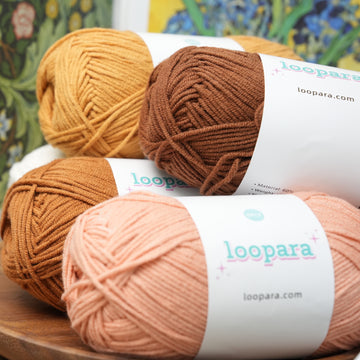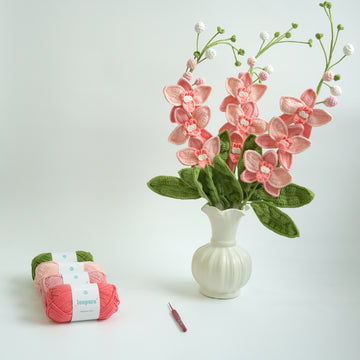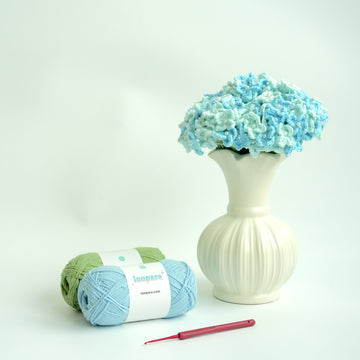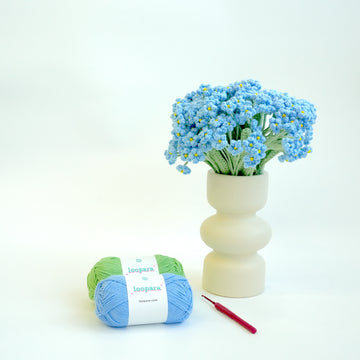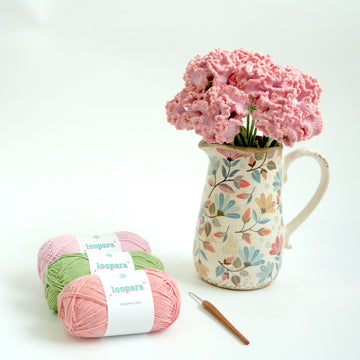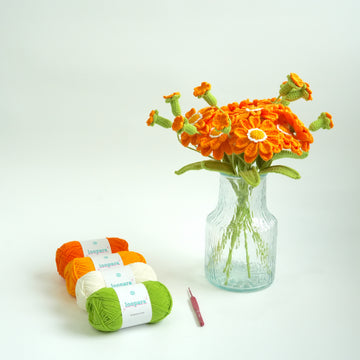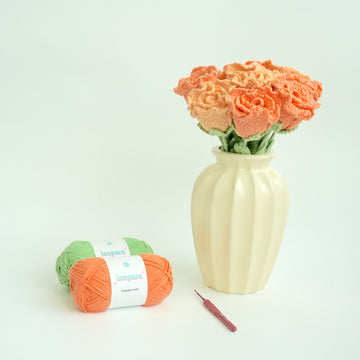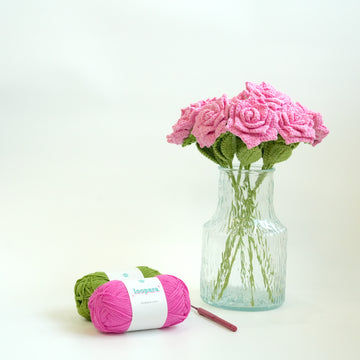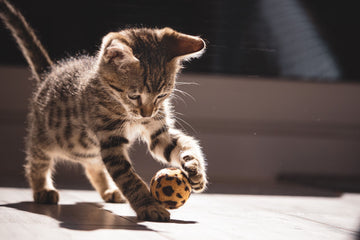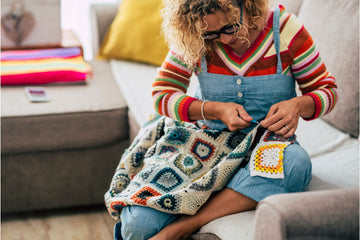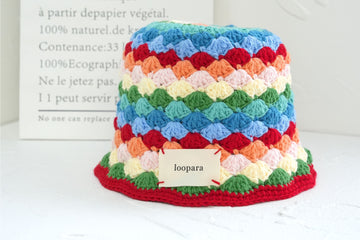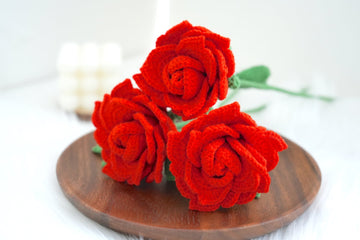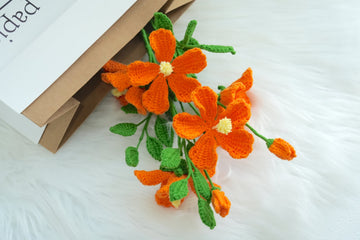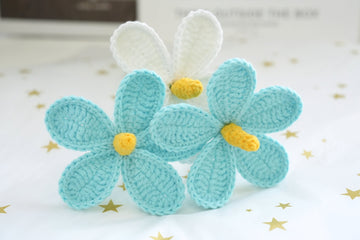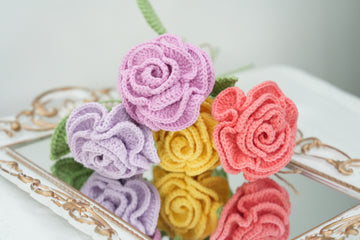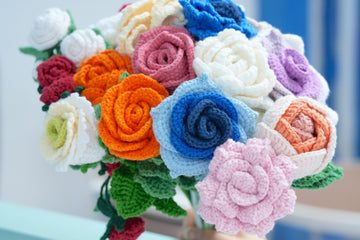Crochet blankets are a wonderful addition to any home. But what’s the best yarn to crochet a blanket?
We’re going to look at the properties of the perfect crochet blanket yarn. And we’ll check out some good options for you to consider.
Properties of the best crochet blanket yarns
Not all crochet blankets need exactly the same qualities. To find the right yarn for your project, think about who’ll be using it, and what they’ll need. Here are some key factors to consider.
Warmth
The whole point of a blanket is that it’s warm, right? But just how warm do you want it to be?
If you’re making a blanket to snuggle under in the depths of winter, you’ll want a yarn with maximum insulation. But if you’re crocheting a throw for a summer evening, a lighter yarn will be the right choice.
Different fibers have different thermal properties. For maximum cosiness, it’s hard to beat wool.
There are a number of different wool types out there that combine warmth with other qualities. Sheep’s wool isn’t quite the same as alpaca, for example, which in turn isn’t quite the same as merino.
If you’re looking for a lighter option, cotton yarn is well worth considering. Like wool, cotton is breathable. But it doesn’t insulate as well, so it’s better for milder temperatures.
The weight of the yarn will affect its thermal properties too. All other things being equal, the heavier the yarn, the thicker the blanket, and the warmer it will be.
Softness
The last thing you want is a scratchy blanket! So look for yarns with smooth fibers that will be gentle against the skin.
The best way to test this is to feel the yarn yourself before you buy it. Even the same brands and yarn types can vary, with different dyes affecting the texture. It’s also worth remembering that some yarns, like linen, will become softer after they’re washed.
There can be a trade-off here between softness and durability. A loosely wound jumbo yarn, for example, could feel softer than an angel’s wing. But it will probably stretch out of shape the minute it goes into a washing machine.

Ease of use
How big is the blanket you’re going to be making? You might be prepared to persevere with a fiddly or awkward yarn if you’re making a baby blanket. But if you want a king-sized product, you’ll need something that gives you a chance of finishing it in your lifetime!
Weightier yarns make for quicker projects, because they’ll create a bigger area of fabric with fewer stitches. But they may be too chunky for some projects. With baby blankets, for example, the larger holes ca risk trapping little fingers. And if you want more detail in texture or pattern, lighter yarns will be a better option.
A good half-way house for blankets is a yarn weighted 3, also known as light, double-knit or DK.
Check the spin too. Loosely spun yarns can be more challenging to work with.
Washability
The fiber type and construction of a yarn will determine how it launders. Some will stand up well to going into the washing machine, while others will emerge misshapen and fuzzy.
If you – or whoever will receive your blanket – are happy to wash it by hand, you’ll have a bigger choice. But if your handwashing spends half its life at the bottom of the laundry pile, opt for something more robust.
Synthetic fibers like acrylic are generally good at keeping their shape in the wash. But they can be a bit scratchy. And if you wash them too hot, they can pill (i.e. produce unattractive bobbles on the surface of the fabric).
They’ll also release microplastics into the water supply with every wash.
Amongst natural fibres, cotton washes well, and organic cotton is more environmentally friendly. Pure wool, on the other hand, needs gentle treatment, and is better washed rarely and by hand.
Multiple ply yarns are generally better than single ply when it comes to washability. And yarns with a worsted spin, rather than woolen spun, will be more resilient.
Color
Color is hugely important to the appearance of your blanket. And there’s a huge range of pre-dyed yarns out there.
Just make sure you have enough yarn in the same color to complete your design. With a large project like a blanket, even subtle differences in shade will be noticeable. So check the labels on skeins to make sure they’re all from the same dye batch.
If you want to add an extra layer of creativity, you could also dye your own yarn. If you’re doing that, choose a yarn that’s colorfast. You don’t want your blanket bleeding color onto whatever it touches, or running in the wash.
Cotton yarns tend to absorb and hold color well. And mercerised cotton is a particularly good option for home dyeing.
Hypoallergenic
Blankets are going to be close to the skin. So anyone with allergies will need a hypoallergenic yarn.
For them, it’s wise to steer clear of coarser yarns and those made from animal fibers. About 1 in 200 people are allergic to lanolin, the oil in wool.
Cotton is a good alternative. With organic cotton, there’s no risk of residual chemicals in the fibers, and any dyes used will organic too. That means it’s kind to sensitive skin, as well as to the environment.
Other good options include linen and bamboo. Look for those that are certified hypoallergenic by GOTS (Global Organic Textiles Standards).
Synthetic yarns can be an option too. In these, the fibers are coated to prevent allergens passing from the fabric to the skin. Look for yarns certified by OEKO-TEX, which have been tested for the presence of toxic chemicals.
Cost
Different yarns vary in price, so work out how much you’ll need before you start. It’s a good idea to build in an extra 10 to 20 per cent as a margin for error.
Synthetic fibers tend to be less expensive than natural options. But shop around. Most large yarn suppliers offer regular discounts. So if you have time, wait for a sale to make your purchase.
Best yarn for crochet blanket
The best crochet blanket yarn for your project will depend on a range of different factors. And any yarn will have pros and cons.
Here are some good candidates to consider.
1. Cotton

If you’re looking for a lighter blanket, cotton is a great choice. It’s breathable, easy to work with, gives good stitch definition and drape, and is good for those with sensitive skin. It holds color well, so it’s good for home dyeing. And it’s robust enough for machine washing.
Look for yarns weighted 3 or above. Multiple plies and a worsted spin will give you a harder wearing blanket.
Cotton isn’t as warm as wool, though, so it’s not the best option for a cosier blanket. And it’s generally more expensive than synthetic yarns.
Although it’s a natural product, it isn’t the most sustainable either. It requires a lot of water for production. Choose an organic option that won’t have been grown using pesticides.
Check out our milk cotton yarn.
2. Wool
Wool blankets are deliciously warm, whilst also being breathable. They won’t absorb moisture, so your blanket will never get sweaty. And they’re the last word in luxury.
But some types can be scratchy – sheep’s wool, for example, is coarser than merino. And the lanolin in wool can irritate sensitive skin.
Wool is also more expensive than synthetic fibers, and it requires more delicate care. A pure wool blanket really needs to be washed by hand with specialist detergent.
If you choose a wool yarn, make sure it’s at least double ply and worsted spun. Single ply and looser spins will be a headache to work with.
Some yarns combine different types of wool – alpaca for softness, for example, with sheep’s wool to make it more affordable.
3. Acrylic
When it comes to economy, acrylic is a good option. It’s inexpensive and can be washed repeatedly without losing its shape. The texture varies, but if you find the right brand, it can be super-soft.
It’s not as warm as wool, though, and it doesn’t breathe the way that natural fibers do. And while it won’t lose its shape in the wash, it is prone to pilling.
It’s also a product of fossil fuels, so it’s not great for the planet. And every time it’s washed, it releases microplastics into the water.
Acrylic yarns are often labeled hypoallergenic because the fibers are coated to lock away allergies. If you’re worried about allergens, look for yarns certified by OEKO-TEX to avoid toxic chemicals.

Summary: best yarn to crochet a blanket
What you need from a blanket will determine the best yarn. All options will come with pros and cons. But for lighter throws, we love cotton yarn. For snuggling in winter, wool is great.
A yarn weighted at least 3 will be thick enough that you don’t spend a lifetime making your blanket. And multiple plies and a worsted twist will make it more robust and easier to care for.


